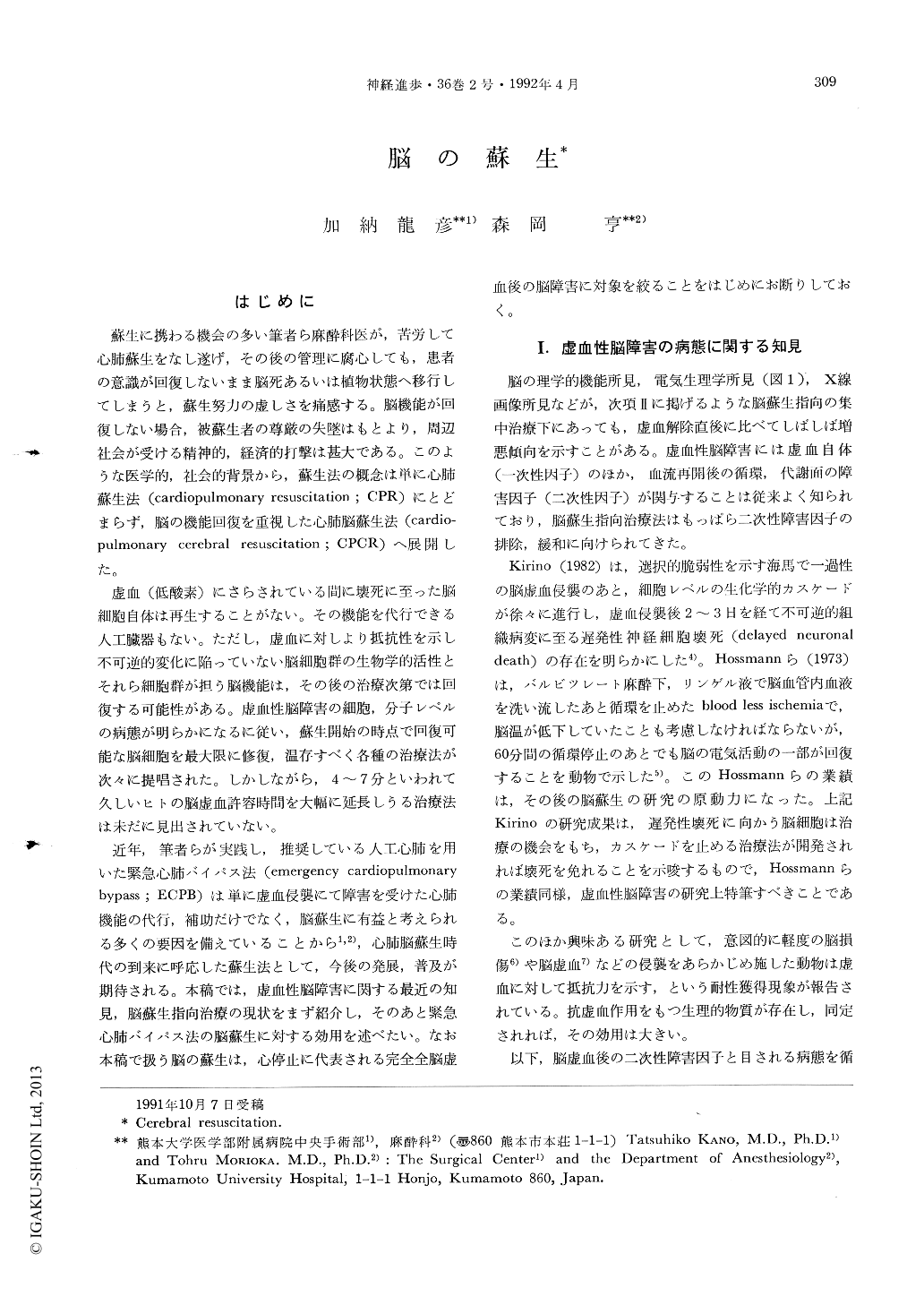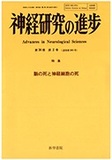Japanese
English
- 有料閲覧
- Abstract 文献概要
- 1ページ目 Look Inside
はじめに
蘇生に携わる機会の多い筆者ら麻酔科医が,苦労して心肺蘇生をなし遂げ,その後の管理に腐心しても,患者の意識が回復しないまま脳死あるいは植物状態へ移行してしまうと,蘇生努力の虚しさを痛感する。脳機能が回復しない場合,被蘇生者の尊厳の失墜はもとより,周辺社会が受ける精神的,経済的打撃は甚大である。このような医学的,社会的背景から,蘇生法の概念は単に心肺蘇生法(cardiopulmonary resuscitation;CPR)にとどまらず,脳の機能回復を重視した心肺脳蘇生法(cardiopulmonary cerebral resuscitation;CPCR)へ展開した。
虚血(低酸素)にさらされている間に壊死に至った脳細胞自体は再生することがない。その機能を代行できる人工臓器もない。ただし,虚血に対しより抵抗性を示し不可逆的変化に陥っていない脳細胞群の生物学的活性とそれら細胞群が担う脳機能は,その後の治療次第では回復する可能性がある。虚血性脳障害の細胞,分子レベルの病態が明らかになるに従い,蘇生開始の時点で回復可能な脳細胞を最大限に修復,温存すべく各種の治療法が次々に提唱された。しかしながら,4~7分といわれて久しいヒトの脳虚血許容時間を大幅に延長しうる治療法は未だに見出されていない。
In this review, the authors first introduced recent advances in pathophysiology and treatment of complete global brain ischemia and then stressed an emergency cardiopulmonary bypass (ECPB) as a potential intervention for cardiopulmonary cerebral resuscitation (CPCR).
Kirino (1982) found that a deleterious pathophysiological process continues even after restoration of perfusion in the hippocampal neurons, which were thought to be highly vulnerable to ischemia and responsible for memory function. His findings have raised the possibility that post-ischemic treatments might be applied before neuronal damage became irreversible.

Copyright © 1992, Igaku-Shoin Ltd. All rights reserved.


